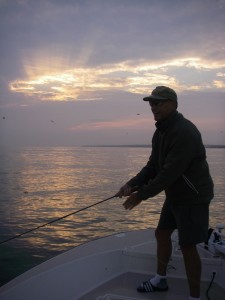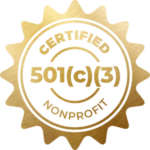Massachusetts Legislature To Hold Hearings On Two SF Sponsored Bills
- SB476 (SD225) – An Act relative to the conservation of striped bass, which would restrict participation in the commercial striped bass fishery to those individuals with an historically significant (1,000 lbs average for previous five years) catch.
- HB667 (HD3042) – An Act relative to the conservation of striped bass, which would establish a special commission to study the economic impact of both the recreational and commercial striped bass fishery.
- Are a guide or charter captain who has lost clients or trips as a result of the fishery’s decline
- Are a recreational angler who has made fewer trips to the coast because of the fishery’s decline
- Are an angling-related retailer who has lost revenue because of a decline in interest in the fishery
Here are some statistics and talking points to help you plan your testimony:
- Relationship of Striped Bass Catch and Saltwater Recreational Fishing Trips 2000- 2015
- FBJ Report on Revenue and Tax Impact of Declining Striped Bass Trips in MA 1 Nov 2015
- Declining catches – the recreational catch of striped bass has declined steadily and dramatically in the early 2000s reflecting on average declining year classes along with continued pressure on the resource including both legal and illegal sale of adult striped bass.
- Poor year class trends – in the 10 years from 1996 through 2005 the average young of the year in Chesapeake Bay was 22.2. From 2006 through and including 2015 it is 11.1 or exactly half. This calls for dramatic adjustments in harvest levels that have not been made. The quality of fishing is suffering.
- Poor apparent survival of year class members – the 2011 year class at 34.6 was easily the largest of the last 10 years. The coast should be swimming in 20-inch fish. Instead these fish are scarcer than they would be from a normal year class. Either there are considerable problems with how that year class was measured or the young fish did not survive as expected.
- Less fishing trips and people fishing in MA – nearly a decade of declining catches has reduced the number of MA saltwater fishing trips since 2006 by 50%.
- Empty assurances from ASMFC – the ASMFC has constantly offered upbeat forecasts for striped bass abundance that have been completely wrong. A more conservative management philosophy than currently exists is needed since the recreational fishery thrives on good fishing and not on high harvest levels.
- Neglect of clear evidence that much more money in managing for a high quality rec fishery – Most current fishery management within the stripers range is focused on maintaining the commercial harvest. The commercial value of striped bass is really incidental to the recreational value of the species, but that seems lost on the ASMFC and most state fishery directors.
- Difficulty of many commercial fishing participants in making money as evidenced by Peros article this year – SB476 is designed to immediately remove the weekend warriors from the MA commercial striped bass fishery. Only fishermen with proven commercial levels of landings will be allowed to continue in the fishery. This will help the real commercial fishermen remaining in the fishery to make a better return while also conserving the resource.
Massachusetts State House
An Uncertain Future For Our Living Blue Planet
Fresh, new evidence shows why we need to act on marine conservation
A new report on the health of the ocean finds that the marine vertebrate population has declined by 49 percent between 1970 and 2012.
WWF’s Living Blue Planet Report tracks 5,829 populations of 1,234 mammal, bird, reptile, and fish species through a marine living planet index. The evidence, analyzed by researchers at the Zoological Society of London, paints a troubling picture. In addition to the plummeting number of marine vertebrate species, populations of locally and commercially fished fish species have fallen by half, with some of the most important species experiencing even greater declines.
These findings coincide with the growing decline of marine habitats, where the deforestation rate of mangroves exceeds even the loss of forests by 3-5 times; coral reefs could be lost across the globe by 2050; and almost one-third of all seagrasses have been lost.
Global climate is one of the major drivers causing the ocean to change more rapidly than at any other point in millions of years. The oceans store huge quantities of energy and heat, but as the climate responds to increasing carbon emissions, the exchange intensifies. This may result in extreme weather events, changing ocean currents, rising sea temperatures, and increasing acidity levels—all of which aggravate the negative impacts of overfishing and other major threats such as habitat degradation and pollution.
Finding solutions for saving oceans
Though the challenge seems immense, it’s possible for governments, businesses, communities and consumers to secure a living ocean. To reverse the downward trend we need to preserve the oceans natural capital; produce better; consume more wisely; and ensure sustainable financing and governance.
Our ocean needs a strong global climate deal and work is already underway as President Obama and leaders of the Arctic nations recently pledged to work together to boost strong action on climate change. But more needs to be done to prioritize ocean and coastal habitat health.
Speak up for oceans! Together we can make a difference by halting the depletion of the ocean and restoring damaged ecosystems for species and people.
MAFMC Council to Hold Scoping Hearings for Action on Unmanaged Forage Species
The Mid-Atlantic Fishery Management Council has scheduled a series of scoping hearings to gather public input for a proposed action to protect unmanaged forage species. The proposed action would consider a prohibition on the development of new, or expansion of existing, directed fisheries on unmanaged forage species in the Mid-Atlantic until adequate scientific information is available to promote ecosystem sustainability. Eight hearings will be held between September 15, 2015 and October 1, 2015 in locations throughout the Mid-Atlantic region. Written comments may also be submitted through October 2, 2015.
Forage species are small, low trophic level fish and invertebrates that play an important role in sustaining the productivity and structure of marine ecosystems. Many forage species in the Mid-Atlantic are not currently subject to significant directed fishing, but increasing global demand for fishmeal, fish oil, and bait could encourage the development of new fisheries for these species. With this action, the Mid-Atlantic Council is taking a proactive approach to conserving unmanaged forage species and the ecosystem services they provide.
The Council has not yet decided which forage species will be addressed by this action; however, this action will only address species that are not currently managed by the Mid-Atlantic, New England, or South Atlantic Fishery Management Councils, or by the Atlantic States Marine Fisheries Commission.
Scoping Process
Scoping is the process of identifying issues, potential impacts, and a reasonable range of alternatives associated with a management action being developed by the Council. Scoping is the first and best opportunity for the public to make suggestions and raise concerns about new Council actions. Comments may be submitted in-person during the hearings listed below or in writing.
Additional information and updates about this action can be found in the scoping document and on the Unmanaged Forage Action page of the council’s website.
SCOPING HEARING SCHEDULE
Click here for a printable schedule of hearings
- Tuesday September 15, 2015. 6:30–8:30 pm. — North Carolina Department of Marine Fisheries Washington Regional Office Hearing Room. Washington Square Mall, 943 Washington Street, Washington, NC, 27889. Telephone: 252-946-6481.
- Wednesday September 16, 2015. 6:00–8:00 pm. — Virginia Marine Resources Commission 4th Floor Meeting Room. 2600 Washington Avenue, Newport News, VA, 23607. Telephone: 757-247-2200.
- Thursday September 17, 2015. 6:30–8:30 pm. — Congress Hall Hotel. 200 Congress Place, Cape May, NJ, 08094. Telephone: 844-264-5030.
- Monday September 21, 2015. 6:30–8:30 pm. — Kingsborough Community College Building T-3. 2001 Oriental Boulevard, Brooklyn, NY, 11235. Telephone: 718-368-5000.
- Monday September 28, 2015. 6:30 pm – 8:30 pm. — University of Rhode Island Bay Campus Corless Auditorium. 215 South Ferry Road, Narragansett, RI, 02882. Telephone: 401-874-6222. (Directions)
- Tuesday September 29, 2015. 6:30–8:30 pm. — New York Department of Environmental Conservation Bureau of Marine Resources Hearing Room. 205 North Belle Mead Road, Suite 1, East Setauket, NY, 11733. Telephone: 631-444-0430.
- Wednesday September 30, 2015. 6:30 pm – 8:30 pm. — Worcester County Library Ocean Pines Branch Meeting Room. 11107 Cathell Road, Berlin, MD, 21811. Telephone: 410-208-4014.
- Thursday October 1, 2015. 6:30–8:30 pm. — Webinar. Information on how to connect to the webinar will be available on the events page of the Council website: www.mafmc.org/council-events/. There will be an audio only option which will require a phone connection.
These meetings are physically accessible to people with disabilities. Requests for sign language interpretation or other auxiliary aid should be directed to M. Jan Saunders, 302-526-5251, at least 5 days prior to the meeting date.
WRITTEN COMMENTS
The Council will also accept written comments through 11:59 pm on Friday October 2, 2015. Written comments may be sent through any of the following methods:
- Online at www.mafmc.org/comments/unmanaged-forage
- Mailed to: Dr. Chris Moore, Executive Director, Mid-Atlantic Fishery Management Council, 800 North State Street, Suite 201, Dover, DE, 19901. (Please write “unmanaged forage scoping comments” on the outside of the envelope.)
- Emailed to: Julia Beaty, Assistant Fishery Plan Coordinator, at jbeaty@mafmc.org. (Please write “unmanaged forage scoping comments” in the subject line.)
- Faxed to: Dr. Chris Moore, Executive Director, Mid-Atlantic Fishery Management Council at fax number 302-674-5399. (Please write “unmanaged forage scoping comments” in the subject line.)
Striper Fishing- Season To Date Report
Most of us have the limited perspective of the quality of fishing in our own area, but stripers do range up and down the coast. With all the concerns raised last year about the latest striper population estimates and the effectiveness of the reduced bag limits, Stripers Forever decided to survey some folks we know along various parts of the coast and find out their impression of how striper fishing is going this season. Here is what we found.
Striper Fishing: Season To Date Report
by Brad Burns President of Stripers Forever
For the 2015 season the Atlantic States Marine Fisheries Commission – the regulatory body responsible for managing East Coast striped bass – reduced coastal catches by about 24% and the harvest in the Chesapeake Bay producer area by 20%. This was done in reaction to a stock assessment that said the striped bass population was declining and was likely to decline further because of a continuing trend of moderate to very poor year classes of young fish. According to the ASMFC this reduction had only a 50% chance of reversing the population decline. Some of the northern states really wanted something much more stringent, while the commercial fishermen in Chesapeake Bay wanted no reductions at all. Things were bad enough in the coastal states, which are coming to realize the value of the recreational fishery that they have already in good part lost, that the pro conservation votes prevailed and the measures were in enacted.
With that in mind, how is the 2015 season going so far, and what is the prognosis for the future?
I poled the Stripers Forever board members, a group that include some highly experienced fishermen, guides, outdoor writers, and veterans of many fishery management boards and advisory groups. The question was “how is the striper fishing going in your area” trying to look at the breadth of sizes and areas of congregation. The responses I received ranged from Maryland to Maine, but they were remarkably consistent.
In a few words, the striper fishery can be summed up as inconsistent at best and continuing to trend downward. Northern New England – north of Cape Cod – has a fair number of small fish. Some folks are regularly catching small stripers, but it is a faint shadow of the school bass fishing 10 years ago. One guide from the North Shore of Boston area had a couple of solid days in June on the school bass he specializes on catching with light fly rods, but then has had tiny catches and even blank trips the rest of the summer. In Massachusetts waters, a couple of momentary hot spots excepted, large stripers are very hard to come by. Stripers, though, are a school fish, and if you happen to be where they are right now then you have good fishing. One very experienced fisherman from MA reports that what was once a Cape-wide summer fishery for large bass has been reduced to one good-sized school showing here and there unpredictably, and being pursued frantically by highly-mobile, opportunistic fishermen getting upwards of $6.00 per pound! A regular Cape Cod outdoor writer reported recently that some commercial permit holders he was talking to had given up because even with the high prices they just can’t find enough fish to make it worthwhile to go out.
Fishery managers have placed much of their hope for the future in the 2011 year class, which this summer represents fish in the 18” to 24” range. Most of the reports I got were that these fish are showing in decent numbers here and there. They are actually said to be more numerous than the smaller fish, which is not the way it is supposed to be. Still, the number of these 2011 fish, which are supposed to represent one of the biggest year classes of modern times, just doesn’t live up to the billing.
Things aren’t any better down in Jersey where one crack, lifetime surf and boat striper man said this: “I fish from the shore and from my boat in central NJ and the fact that I caught one striper over 20 lbs. this year as compared to 125 over 20 lbs in 2011 about sums it up. For me this was the worse it has been in about 30 years.”
The brightest report I have is from a friend in Maryland who also knows his striper fishing. Admittedly my friend works for the Maryland Dept of Natural Resources, but he tells me that while larger fish are lacking in the Bay, that sub 20-inch stripers – these would come from what are officially quite small year classes – are quite numerous, and that while the charter boats aren’t happy the light tackle anglers are having a ball. He also said that while there is nothing official yet the young of the year for this year appears to be looking up.
So what does all this mean? When will this fishery turn around? The answer is, based on the fish that are already born, that it won’t. The average young of the year count in Chesapeake Bay from 1995 through 2005 was 21.06. This was the pinnacle of the striper boom. The average from 2005 to 2014 dropped to 9.73. That means that there were only about 40% as many young stripers born during the last decade as the one before. More ominously, during the last three years that number has been an average of only 3.52 which is just 15% as many. If we are looking at a declining fishery now, imagine how it will look when the last of the fish born during the boom are gone.
Why are the year classes smaller now than 15 years ago? No one knows the answer to that for certain. It could be the effects of myco, of pollution in Chesapeake Bay, the wrong kind of weather, or killing too many of the large breeders. Stripers have always been sporadic in their spawning success, and that is why nature had these large female breeders carry so many eggs and live such long lives – to spawn many times. This would carry the striper population’s spawning potential over the naturally occurring weak reproductive years. We really don’t understand how important the size of the spawning stock biomass is to the potential of striped bass to produce good year classes. But it certainly seems counter to the biology of the creature to be directing so much harvest at these large old breeding fish.
A more risk adverse approach would be to not kill any of these big fish until the population recovers and then to kill relatively few, taking the harvest instead from smaller fish, since something like 20% of these will die each year of natural causes. This is exactly opposite of the way we have been doing things. It appears that one way or another we will eventually stop harvesting so many large fish, simply because there will be so few left to catch.










